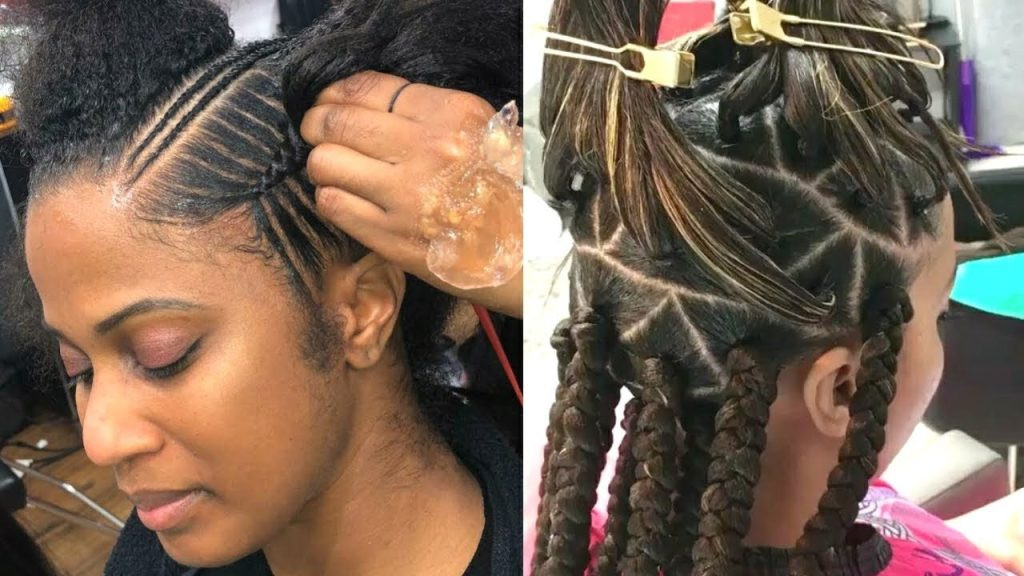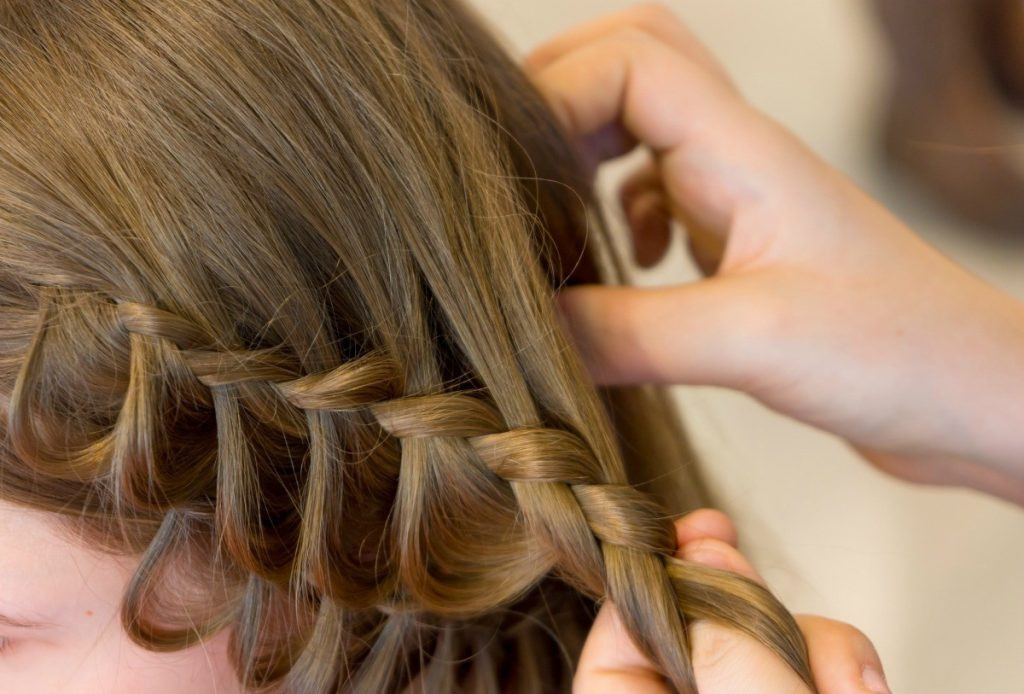How to Braid Hair: Step-by-Step Guide
Braiding is an essential hair styling technique that adds beauty, versatility, and practicality to everyday haircare. Whether you’re preparing for a regular day or a special occasion, braids can boost your overall appearance. I’m going to instruct the techniques of making harnesses, but in these techniques, Every single person an absolute beginner, will understand the beginner methods up to the intermediate braid level.
Why Learn to Braid Hair?
With the help of braiding techniques, you will not only be turning your hair into a cool hairstyle, but also making a practical skill that will help you to do all the rest. Besides, as a result, this will not only save your time but also the hair will look nice and strong. Braids are suitable for different hair textures as well, ranging from straight hair to curly hair, The hairstyle also fits all kinds of activities, from workouts to formality.
Getting Started with Braiding

Before you can get hands-on with the so-called French or fishtail braids, you have to understand the fundamentals first. First, let’s Learn the Three-Strand Braid, which is usually a step in most of the braid types formation.
Step 1: Prepare Your Hair
Before you start braiding, make sure your hair is gentle and tangle-free. 0 your hair should be the easiest thing of all of the pre steps. The further you comb through your hair with a brush the better hair is going to be.
- Shower & Towel: Fresh hair is the best hair. To get more texture in your hair, don’t use conditioning, and let your hair air dry or lightly blow-dry it out.
- Get Rid of the Tangles: Your is the right way out. …, You can use a leave-in conditioner or a light hair cream for a smoother effect.
Tip: A little bit of serum will make your braid look sleeker and control the frizz too. In addition, it can also prevent your hair from looking oily or greasy as well.
Step 2: Section Your Hair
Divide your hair into three equal sections in the following way: left, right, and middle.
Step 3: Start Braiding

- Take the right section of your hair and bring it across the central section while keeping the middle section in a secure position.
- Next, bring the right section over the new middle section. Using the four sections, continue braiding by taking the left one over the one in the center, then the right one over the new central one, and so on, till you reach the bottom of the strands.
- Pull tightly through each cross and alternates the pulling until the braid becomes a neat and consistent series of winds down to the ends of the hair.
Step 4: Secure the Braid
When you have made a straight stitch for the length of your hair, put in an elastic band at the end of your braid. To get a smooth look, gently pull out some hair on the side of the braid.
Note: Slide your hands close to the weaving to keep the tension which will deliver a crisp and a more equal braider result.
Table: Braiding Techniques Overview
| Braid Type | Description | Difficulty | Key Tip |
|---|---|---|---|
| Three-Strand Braid | Basic braid; a foundation for most other braid styles. | Easy | Maintain even tension. |
| French Braid | Adds hair as you go for a braid close to the scalp. | Medium | Keep strands smooth and even. |
| Dutch Braid | Similar to French braid but sections are crossed under. | Medium | Keep sections tight for a 3D look |
| Fishtail Braid | A two-strand braid for a more intricate appearance. | Hard | Work with small, thin strands. |
Advanced Braiding Techniques
Beyond the basic braid, the possibilities to finest styles like the French braid, Dutch braid, and fishtail braid become wider and for one who has mastered various braiding types.
How to French Braid
The French braid is a chic and multi-purpose hairstyle that lets your hair run close to your scalp in a way that you can wear it anywhere.
- Start with a small section at the top of your head: Divide it into three strands.
- At first, when left with a lesser strand over the middle, right over the middle is another way to get ahead of the game.
- Keep adding hair as you move on: When you go down the braid, take a little bit of hair from either side and attach it into the braid.
- Propel the weaving to the hair end: Fasten the end with an elastic band for the time being.
Tip: A balanced pull on the hair all the time is the trick to make a perfect French braid.
How to Dutch Braid
Like French, the Dutch braid is a style of hairdressing that is based on the crossing of sections, letting the hair run more raised and be more dimensionally like 3D.
- Firstly, your hair needs to be divided into three at the crown.
- Cross the right strand under the middle, and then the left under the middle.
- Put hair to any stray ends by each section, and then you can come down the side to the end from that.
- In the same way tie off with a cotton band at the end.
Fishtail Braid
When a sleek and twisted look is looked for, the fishtail braid suits fine.
- Separate hair into both the right and left sides.
- Take a tiny piece that is at the outer right end of the left part and bring it over to the right part.
- Put hair in the left section and then move looking for the right section and remove another one from the left section: Take it and another one to the right.
- Proceed up to the end and tie a small band.
Info: While figure-eight is needed to create all the other types, fishtail is different in that only two side segments are required!
Table: Common Braiding Issues and Solutions
| Issue | Cause | Solution |
|---|---|---|
| Uneven Braid | Unequal sections or uneven tension | Start with even sections and keep consistent tension throughout. |
| Frizz and Flyaways | Dry or frizzy hair | Apply styling cream or serum before braiding. |
| Braid Unraveling | Loose grip while braiding | Keep a firm grip and use an elastic to secure the ends. |
Troubleshooting Common Issues
- Uneven braid: Division of the hair into equal sections and the even tension to run through it would definitely help your braid to even turnout.
- Frizz and flyaways: A small quantity of styling cream or oil having the feature of giving a better-smoothed appearance of hair can be the very thing to use during the process of braiding.
Conclusion
Braiding is a fun and useful skill that allows for endless creativity. A three-strand braid is one way of braiding hair shortly, but a Dutch braid is also fun to try. These methods are bound to amaze anyone who sees you use them. Practice is the key to mastering this art. As time goes by, you will be able to braid without looking at the process or the instructions. So grab a comb, make the hair into sections, and fashion that enviable new look by adding some imaginative texture through the art of weaving!
Frequently Asked Questions
- How do I make my braid stay tight all day? By keeping even tension as well as a good elastic, the end of a braid is left to be as a secure closure as you want.
- Can I braid curly hair? Yes! Curly hair looks beautiful with braids. Perhaps you should consider detangling and stretching your curls first as it really helps make the braid look a bit tidier.
- How do I prevent frizz in my braids? Make use of a lightweight serum or styling cream, and ensure that your hair is smooth before you begin.
- How long should my hair be to braid it? Hair, almost of any length, can be braided, but for most braid styles, hair, at least, reaches the shoulders.
- What products help with braiding? Products like leave-in conditioner, styling cream, and serums are the best answers that can help you get rid of frizzy hair and make it more manageable when you are going to braid.
